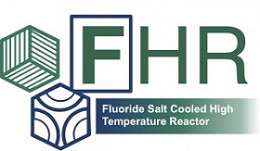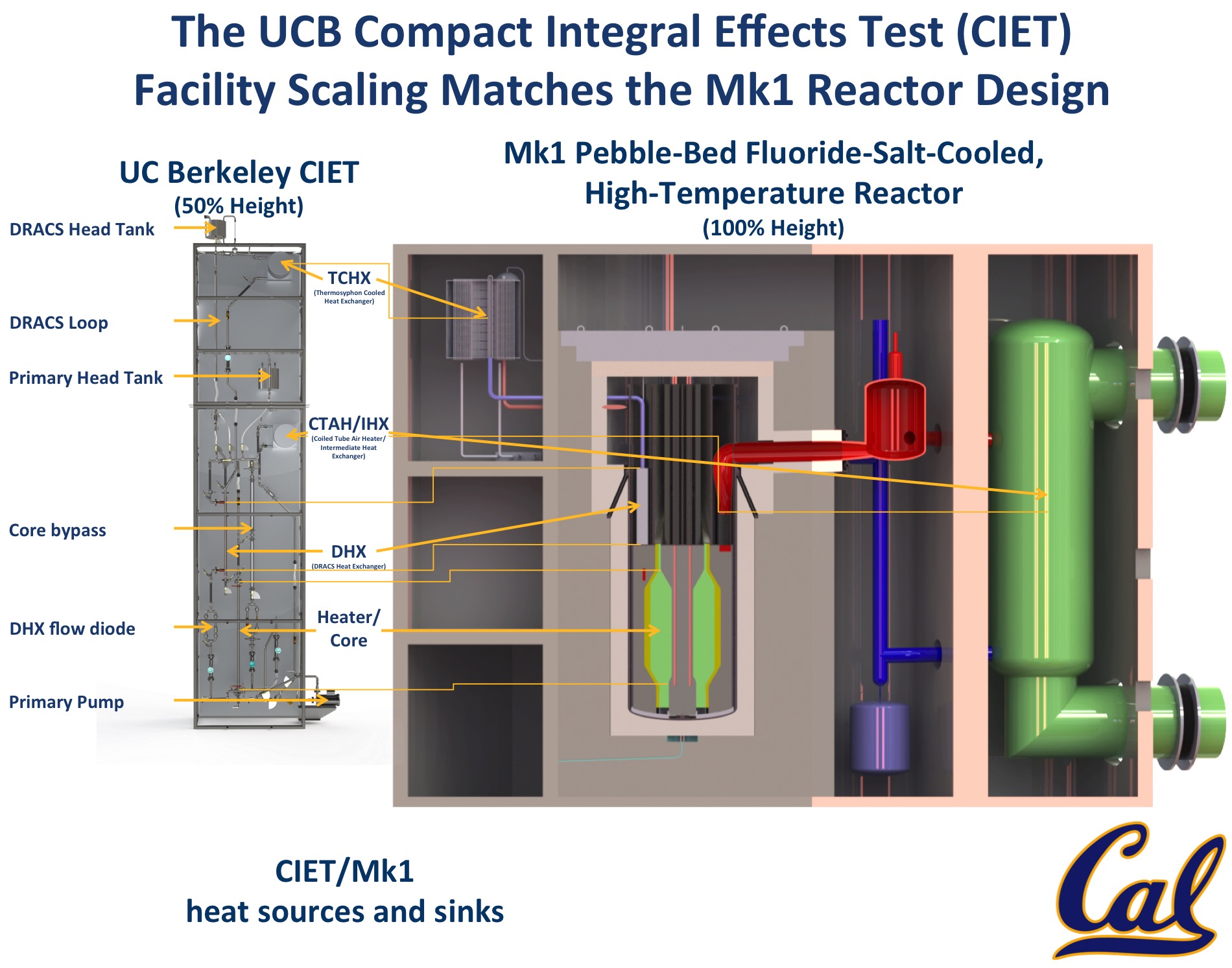The Compact Integral Effects Test (CIET 1.0) facility is a primary component of the UCB Thermal Hydraulics Laboratory’s (TH Lab’s) mission to develop the scientific and technical basis to design and license fluoride-salt-cooled, high-temperature reactors (FHRs). Along with the other experiments and projects in the UCB TH Lab, the CIET 1.0 facility is part of an experimental test program to validate simulation codes for applications to FHRs. The capability to validate integral transient response models is a key issue for licensing new reactor designs, and CIET 1.0 as well as future iterations of the facility will be critical for providing the validation data to accomplish this.
Currently, the three key missions of the CIET facility are:
- To provide experimental validation data for system-level thermal hydraulic codes that are used by the NRC and other nuclear regulatory agencies for licensing
- To serve as an advanced reactor test bed for advanced reactor control strategies, particularly for cyber security strategy
- To provide a high-quality user experience to train operators, designers, and regulators on the safe construction and operation of FHRs
CIET 1.0 is the first integral effects test (IET) facility to study FHRs, and is designed and constructed to reproduce the integral transient thermal hydraulic response of FHRs under forced and natural circulation operation. Experiments utilizing the CIET 1.0 facility are novel because the facility uses organic simulants to provide the ability to reliably predict salt cooling behavior in FHRs. CIET 1.0 provides data to validate simulation codes for direct reactor auxiliary cooling systems (DRACS), used for natural-circulation-driven decay heat removal in FHRs. CIET 1.0, shown below, is designed to replicate FHR transient response for a wide range of licensing basis events (LBEs).
The CIET 1.0 facility uses Dowtherm A oil as a simulant fluid for fluoride salts, because at relatively low temperatures (50-120°C), Dowtherm can match the Prandtl, Reynolds, and Grashof numbers of the major liquid salts simultaneously, at approximately 50% geometric scale and heater power under 2% of prototypical conditions. CIET 1.0 was scaled based on the earlier design of a 900-MWth channel-type pebble bed advanced high-temperature reactor. Subsequently, UCB developed a new, pre-conceptual design of a 236-MWth Mark 1 pebble bed FHR (Mk1 PB-FHR), after the scaling and design of CIET 1.0 were finalized. The scaled elevations of the main heat sources and sinks in CIET 1.0 and the Mk1 PB-FHR design have reasonable agreement, as shown below.



